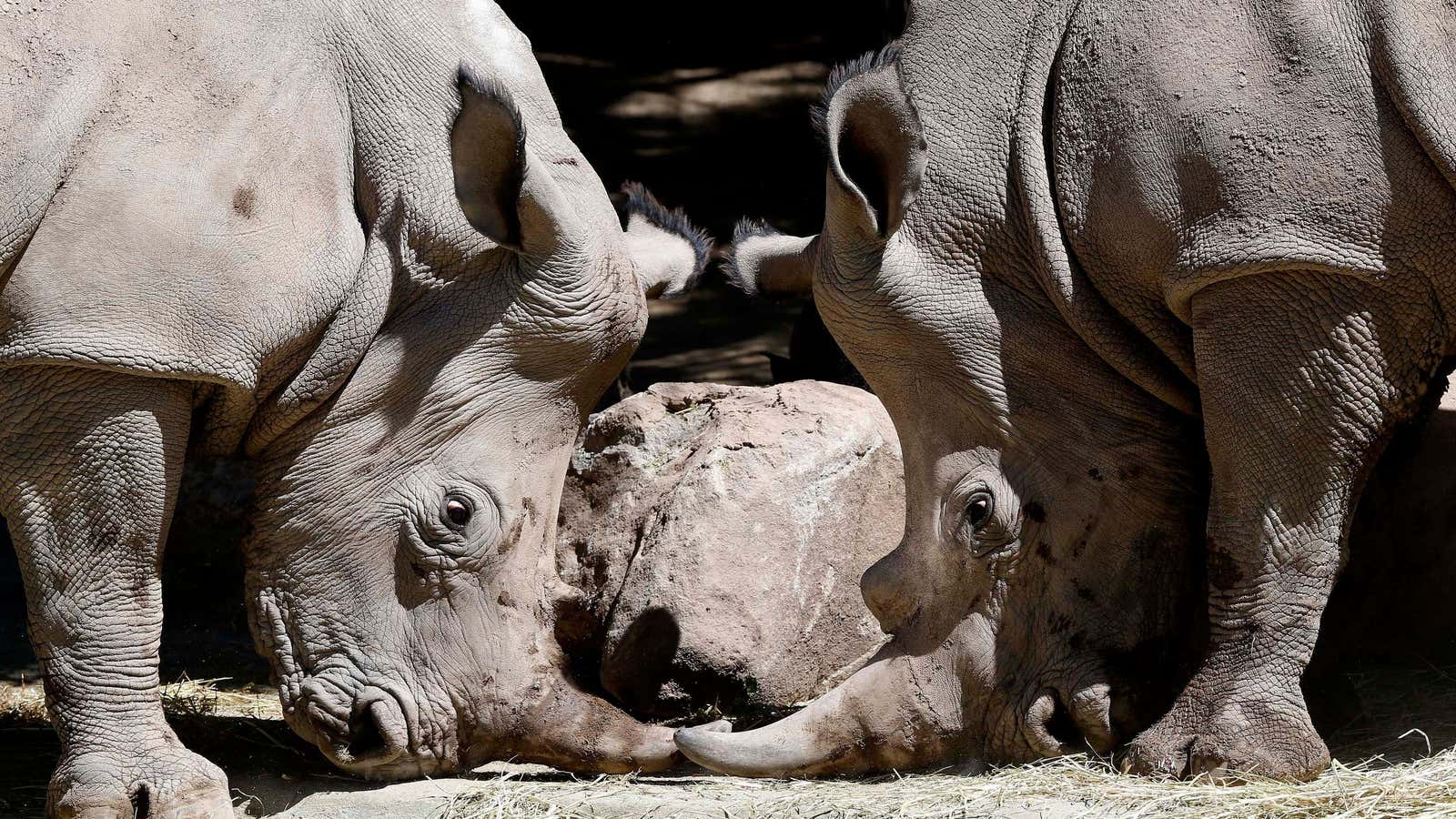Thanks to a methodically butchered rhino, we now know that premodern humans were active in the Philippines earlier than previously believed. Much earlier.
A study published last week (pdf) in the journal Nature puts the recently discovered remains of the animal—found on the main Philippine island of Luzon—at between 631,000 and 777,000 years old. By contrast, modern humans are believed to have been in the Philippines 67,000 years ago.
The excavation site offered up no remains of hominins, but the now-extinct rhino was clearly butchered with stone tools—by someone. The leading candidate is Homo erectus, a lineage that lived from 100,000 to 2 million years ago and is known to have made its way into Southeast Asia. The Indonesian island of Java has Homo erectus fossils dating back more than 700,000 years.
The skeleton of the animal is about 75% complete. Using different dating methods on various materials found at the site, including the rhino’s tooth and quartz grains from sediment, researchers put their best estimate for when the animal died at 709,000 years ago. The site also yielded nearly 60 stone tools.
One of the many puzzles is how the toolmakers got to Luzon. It’s unlikely they were able to make boats with the intention to cross the sea. They could have come from the north—from China through Taiwan, which was connected to mainland Asia during periods of low sea. Another possibility is they approached from Borneo.
“Floating islands” might have played a role, too. Study author Thomas Ingicco, associate professor at the French National Museum of National History, said the colonization “could have been possible thanks to natural rafts such as floating mangroves that typhoons occasionally break off the coast.”
